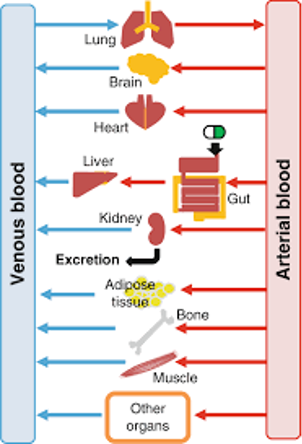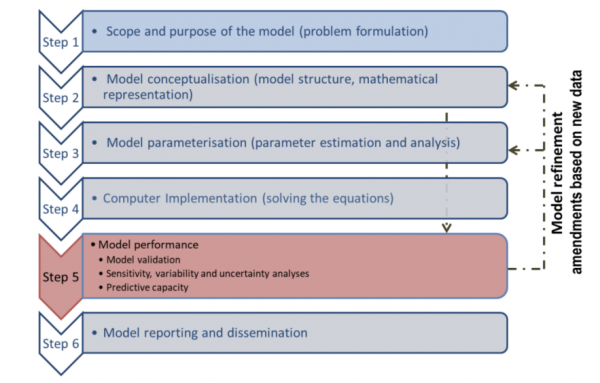by Gustavo Nativio Hey there! I‘m the resident intern here at ScitoVation for the summer. As someone deeply interested in systems biology and solving biological problems using mathematics and computational models, the work done by ScitoVation is fascinating to me. ScitoVation is using innovative computational modeling of physiological systems to improve regulation efficiency in the pharmaceutical industry and in the environmental health field! I work with Physiologically Based Pharmacokinetic (PBPK) modeling. PBPK modeling is a tool to predict the distribution and fate of drugs within an organism. PBPK …
Physiologically Based Pharmacokinetic (PBPK) Modeling of Central Nervous System
by Marjory Moreau, Ph.D. I have worked in PBPK modeling for many years and until a few months ago, I never had to deal with the brain compartment. Well, I had a brain compartment in several of my models, but I never really thought about the blood brain barrier and all the transporters involved in protecting or bringing compounds into the brain until recently. I …
What are NAMs?
by Sage Corzine If you got pumped up about NAMs in a toxicology webinar, tried to find more information on Google, and got redirected to the North American Menopause Society, you are not alone. NAMs or New Approach Methodologies are a vital and growing part of chemical hazard and risk assessment research. Here are a few fun facts …
Updated Guidance from OECD on Reporting PBPK Models for Risk Assessment
As an advocate in PBPK modeling for risk assessment, I want to share with you the latest guidance from the Organization of Economic Cooperation and Development (OECD). I write a lot of reports on PBPK models for clients, and it makes a huge difference to always use the same format to report the goal of the project, the development of the PBPK model and how it will be used. It makes my life easier and obviously the client appreciates being able to follow and understand …
Using Cells and Mathematical Models to Interpret Thyroid Hormone Disruption
by Jeff Fisher This story begins in 1998 when I reviewed a technical document for the chemical perchlorate, now known to be widely distributed in the environment on earth and has been found in high concentrations on Mars. In 1998, the subject of this document was a proposed safe drinking water level for perchlorate based on historic medical use of perchlorate as a probe of thyroid function, in the diagnostic called the thyroid discharge test. This document changed …
Guidelines for assessing Pharmacokinetic Bias in Epidemiology
Melvin E. Andersen Biomarkers of exposure can be measured at lower and lower levels due to advances in analytical chemistry. Using these highly sensitive methods, some epidemiology studies report associations between plasma and urinary biomarkers and health outcomes at biomarker levels much below those associated with effects in animal studies. In some cases, these associations may arise from pharmacokinetic (PK) bias, i.e., a situation where a confounding …
- Page 2 of 2
- 1
- 2






